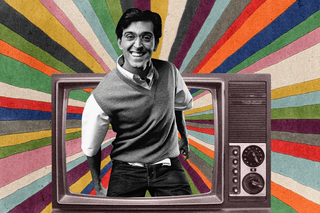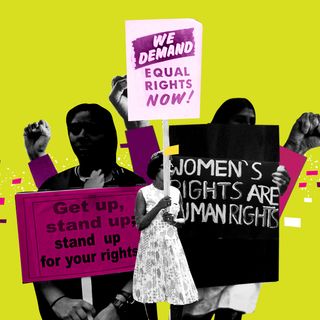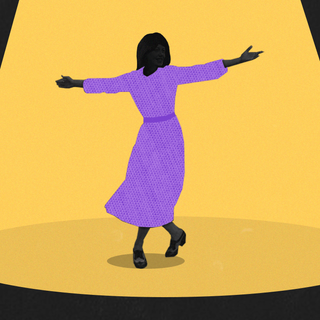
Can We Move On: From the Trope of the Disabled Character Who Has To Overcome Their Disability To Succeed
Bollywood taught us to care about people with disabilities only when they can figure out a way to “recover.”

In Can We Move On, we revisit old tropes and question whether they have any remaining cultural relevance.
Bollywood’s portrayal of people with disabilities is a minefield of ableism. From portraying disability as divine punishment for one’s karma in movies like Kashish and Dhanwan; to using it for comic relief in movies like the Golmaal series, Mujhse Shaadi Karogi, and Tom, Dick and Harry; to suggesting that the main purpose of a disabled person’s life is to overcome their disability… or, you know, die.
A 2015 study, which analyzed portrayals of disability in Indian cinema since the 1930s, found that we tend to depict disability as a punishment for one’s karma, as comic relief, as a trait associated with villains, and often as “inspiration porn,” where the struggles of people with disabilities are objectified for a largely non-disabled audience.
Through the story of Hrithik Roshan in Koi Mil Gaya, Bollywood taught us to respect people with disabilities only when they can figure out a way to “recover” — even if the process requires them to summon an alien from another planet, and have said alien pity them enough to alien-magic them into making their disabilities disappear.
If that seems like too big of a feat to accomplish though, there’s always euthanasia. When Hrithik Roshan’s character in 2010’s Guzaarish couldn’t summon an alien as he’d done in 2003, well, he had no option but to kill himself, right? Navigating life with a disability can certainly be challenging — especially in an ableist world like ours — but to equate it to death shows just how little we think a disabled person’s life is worth. As does the idea that if one has a disability, they can never be accepted for who they are, as they are.
Essentially, Bollywood’s ableist gaze does look at disability as the ultimate villain — necessitating the need to eliminate it. “Why can’t Bollywood filmmakers seem to give disabled protagonists challenges other than overcoming their disability?” Amal Singh asks in his article in Arré.
However, overcoming a disability isn’t always possible logically because, you know, science can be mean like that. In that case, one must turn their disability into a super-ability. Remember how the character of Kachrain Lagaan (played by Aditya Lakhia) was deemed worthy of the respect of everyone in his village only when he spun his disability so well he became a “spinner” for their cricket team?
Then, of course, there’s the phenomenon of the “sixth sense.” From Sanjay Dutt’s character in Dushman to Akshay Kumar’s, Paresh Rawal’s, and Arjun Rampal’s characters in Aankhen, to (yet again) Hrithik Roshan’s character in Kaabil, Bollywood loves portraying visually-challenged characters use their “sixth sense” to take down their enemies, or you know, rob banks.
Related on The Swaddle:
What It’s Like to Live With: Physical Disability in the Times of Covid19
No matter how the trope manifests, ultimately, it’s used to generate “inspiration porn.” But in doing so, movies can perpetuate harmful, and even impossible, standards for people with disabilities.
Merry Barua, founder and director of Action for Autism, a Delhi-based NGO, had told The Swaddle of an autistic child whose school expected him to overcome his challenges when he graduated tenth grade and was getting ready to step into his adult life in a few years. To drive home the point that a person doesn’t simply outgrow their disability, Barua had to ask his teacher, “Now that you’ve worn glasses for nine to 10 years, you probably don’t need them anymore, do you?”
Moreover, suggesting that people with disabilities have super-abilities to “compensate” for their disabilities can lead to their achievements being discounted — besides, of course, suggesting that living with a disability means one isn’t a “whole” person. Nipun Malhotra, a disability rights activist from Mumbai, wrote in Scroll: “[W]hen I excelled in school, others often argued that ‘since God had taken way one thing, he had compensated me with another.'”
Bollywood’s depiction of people with disabilities creates terrible stereotypes about their lives in the minds of the able-bodied population. “The age we live in right now, misrepresentation and erasure in pop-culture has the capacity to do palpable harm and set back actual work done by activists,” Singh wrote.
Problematic depictions of disability in Bollywood can be traced back to the 1930s with movies like Jeevan Naiya. It’s 2021 now. Can we please move on?
Devrupa Rakshit is an Associate Editor at The Swaddle. She is a lawyer by education, a poet by accident, a painter by shaukh, and autistic by birth. You can find her on Instagram @devruparakshit.
Related


Whose Feminism Is It Anyway?
